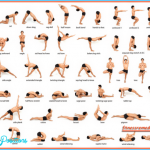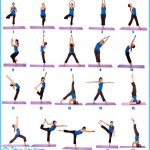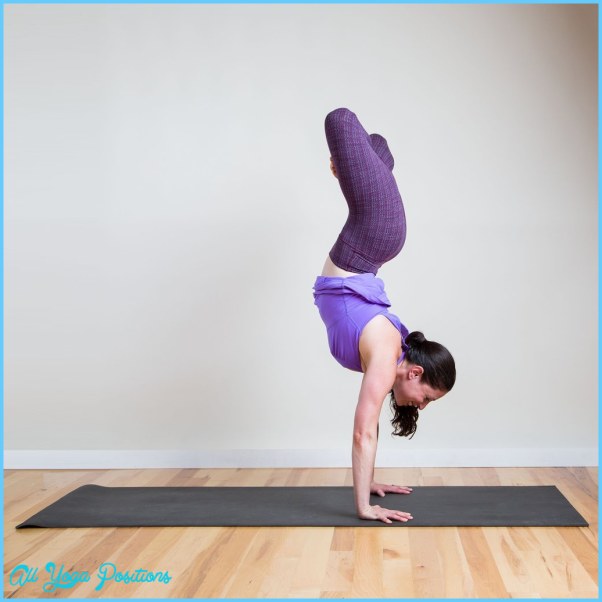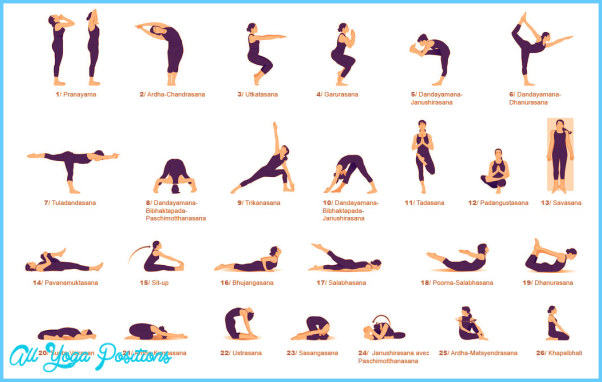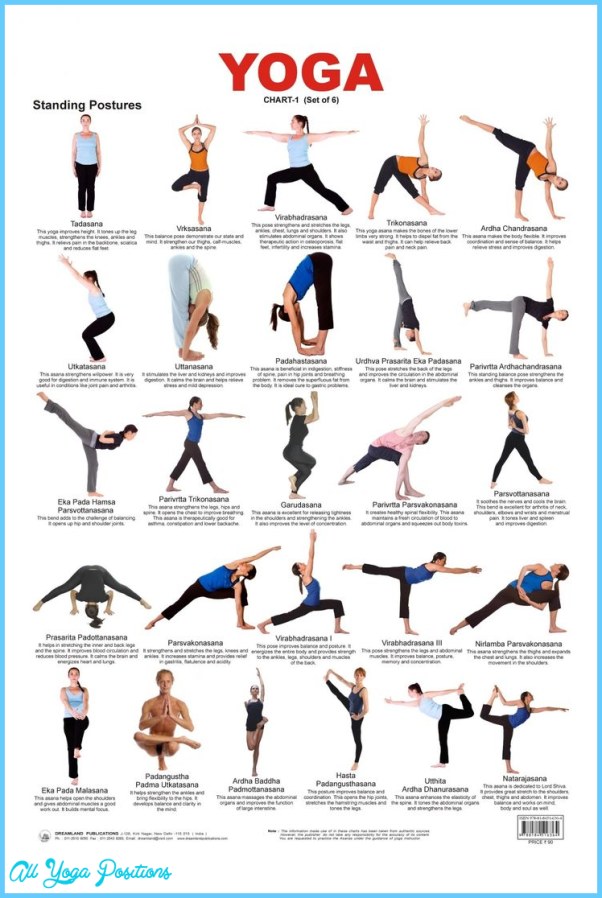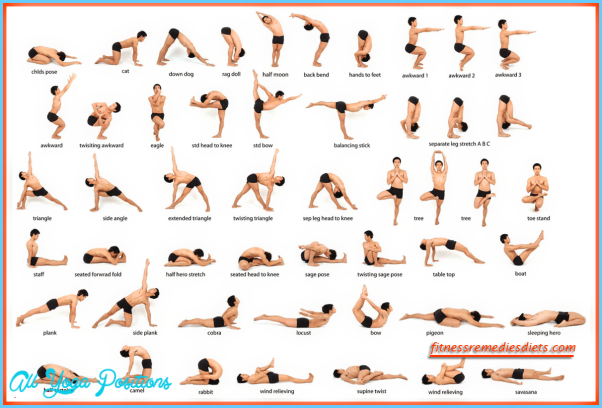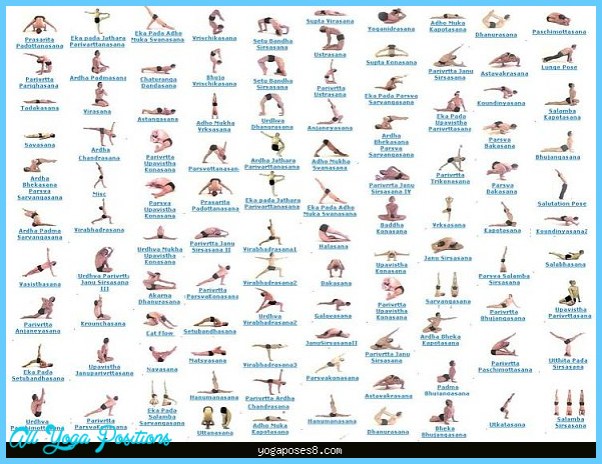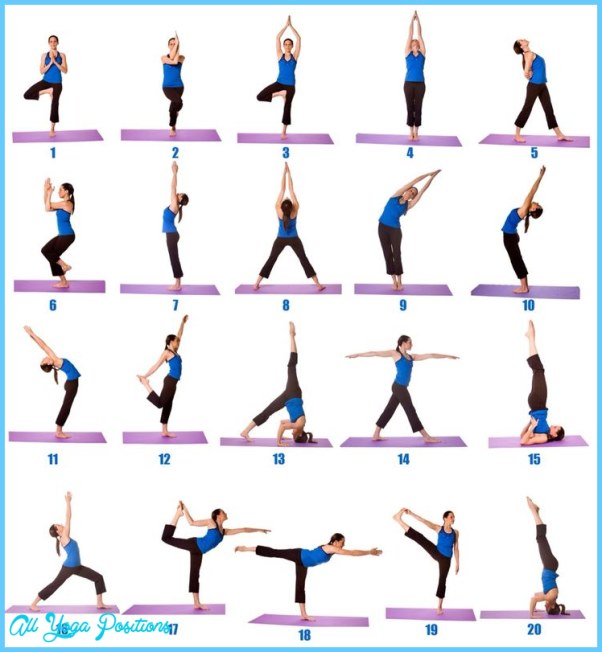The Warrior poses are strong standing poses. We develop muscular strength in the legs and stability throughout the body and in the mind. Warrior II is excellent to explore the range of movement in the hip joints safely and prepares us for deeper hip-opening poses. Remember the movement here is initiated from the hips and there should never be any pain in the knees . m ‘ m
Standing lengthwise on your mat step your feet wide. A good measurement is to extend your arms and place your feet underneath your hands.
List Of Yoga Poses With Pictures Photo Gallery
Turn your right toes out pointing to the front of the mat, and your left toes slightly towards your midline. Inhale here.
Exhale as you bend the right knee aiming to get the knee over the heel and thigh towards parallel to the mat.
Do not let the right knee move beyond your toes as this can strain your knee joint. The most important alignment focus here is the hip joint.
The right thigh is externally rotated The top of the thigh, knee and middle toes are pointing in the same direction.
As you bend the nght knee simply sink down staying centered over your pelvis. The left leg is straight and you are grounded through the left foot.
Stay for five breaths before repeating with the opposite leg.
MODIFICATIONS & CONTRAINDICATIONS
This is a strong standing hip-opener so you are in control of just how much you bend the knee and how much openness in your hip you want to create. However if you have hip injuries or sensitive knees be very mindful if you practise any hip rotations.
Perhaps not a traditional yoga asana the Fire-log pose gives a great insight in safe alignment in a seated hip-opener. Very often we feel intense sensations as we soften into this pose and we learn to align our body and breath.
Stretches the hips, specifically the outer thighs and the groins
Great for lower back issues
HOW TO PERFORM
Sit comfortable on your mat or blanket. Both sitting bones grounded and spine extended.
Bend the right knee and place your shin parallel to the front of the mat. The right knee is to the right side of the mat and foot to the left.
Place your left lower leg directly above the right lower leg. You are literally left knee on top of right foot and left foot directly above the right knee. You have created a triangular shape between your groins and inner knees.
Flex your feet slightly to protect the outer ankle. This may mean the knees will lift higher but you are staying aligned and safe in your seat.
This alignment is important to understand the probably very intense sensation in the hip joint. Like the Warrior pose this movement originates from the hips rather than knees and ankles.
Take at least five long slow breaths as you explore folding over your legs. Very gently release and repeat to the other side.
MODIFICATIONS & CONTRAINDICATIONS
Do not do this pose if you have knee or hip injuries. Instead enjoy a cross legged position where shin crosses shin instead of ankle crossing ankle. Add cushions or yoga blocks so your seat lifts. This creates more space for movement and less pressure on the knees.
LOTUS POSE
Padmasana or Lotus pose is not just a beautiful posture, but the alignment helps to give the body so much stability that one can sit up comfortably steady and balanced during meditation. With the feet pressing onto the thighs you create stability and structure. When in a comfortable Lotus pose there is no need to worry about one’s body. Now you can practise meditation or pranayama freely.
SMILE NATURALLY
Stretches the hips Supports the pelvis and spine for good posture Beneficial pose for stability -when the body is steady the mind becomes calm
Excellent pose for meditation and pranayama
HOW TO PERFORM
Sit in Dandasana on the floor or mat with the legs out in front of you.
Bend your right knee and place the foot on top of the left thigh as high towards the groin as possible. Beware that there is no pain in the knee joint or in the ankle.
Bend the left knee and place the left foot on the right thigh crossing your shins.
It may support your posture if you sit on a small cushion or folded up blanket.
Remember this is a move from the hip joints. The knees and the ankles should always feel supported and pain-free (practise Ahimsa, non-violence).
Explore this pose on both sides. One will definitely be easier than the other so it is important to find a little balance by practising with both the favoured side and the more challenging side.
MODIFICATIONS & CONTRAINDICATIONS
If you suffer with knee or hip issues this may not be your pose. Meditation can be practised in any cross-legged position, sitting on cushions or even on a chair. Practise kindness to your body and remember Patanjali’s Yoga Sutra Verse 2.46 Sthira Sukham Asanam – the posture is steady and comfortable (no pain!).




